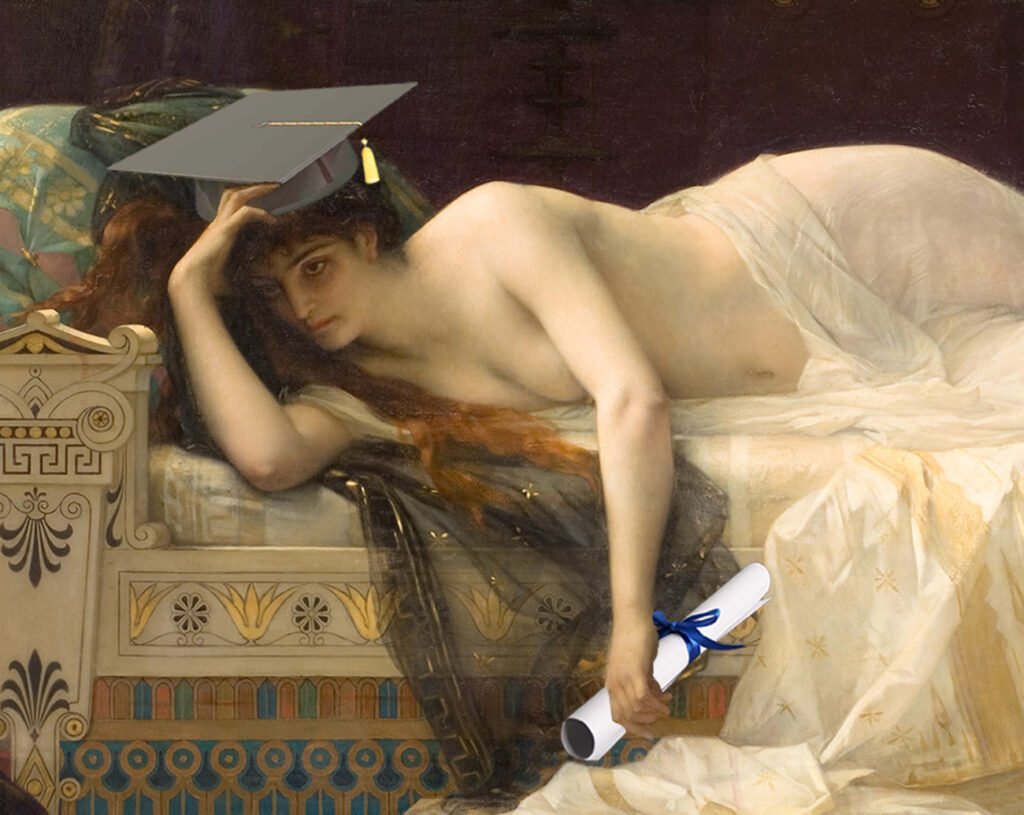Art History, Visual and Performing Arts, and Graphic Design majors across the nation are associated with the highest rates of unemployment compared to other areas of undergraduate study, according to data collected by the Federal Reserve Bank of New York (NYFED) for the first quarter of 2024. Adding insult to injury to recent survey findings showing that a majority of New York-based artists experience financial instability, NYFED’s report reveals that over half of art history and arts majors are “underemployed,” meaning working jobs that don’t require a college degree.
In an online interactive data chart, NYFED examines the career placement trends and median wages or salaries of recent graduates compared to those of people with only a high school education, divvying up the data by college majors for a clearer picture of the labor market. As of February 2024, people who majored in Art History in undergrad held an 8% unemployment rate and a 62.3% underemployment rate, despite having the highest level of education out of the creative majors included in the report, with 43.8% also holding graduate degrees. Fine Arts majors are practically neck and neck with art historians, with a 7.9% unemployment rate, but pull ahead slightly in field placement with a 55.5% underemployment rate.
On the other hand, Performing Arts majors come through at a 5.5% unemployment rate, but lead in underemployment out of the included creative studies fields at 65.3%. Graphic designers, while primarily only holding Bachelor’s degrees according to NYFED, had the lowest underemployment rate in the creative sector at 33.7%.
The numbers don’t inspire a lot of confidence in an already dicey labor market that prioritizes the STEM fields. For comparison, Industrial Engineering, Construction Services, and Medical Technician majors lead the way in job placements, and various engineering tracks boast minimum six-figure median salaries by mid-career (ages 35 to 45, according to NYFED).
Despite the harsh career prospects, it doesn’t look like Arts and Culture degrees are going anywhere anytime soon. University of California’s Berkeley Campus reported a 121% increase in first-years declaring majors within the school’s Division of Arts and Humanities between 2021 and 2022, while Arizona State University boasted over 4,000 students in the same department as of 2021. And a recent report summarizing the results of a 2022 survey conducted by the Strategic National Arts Alumni Project (SNAAP) found that 75% of arts and design alumni between ages 18 and 64 have occupational responsibilities related to their field of study. “An occupation-based understanding of employment is important, but a limited means to understanding the value generated for an individual and the social value that applying skills as an artist or designer in the workforce can generate,” SNAAP’s report reads.
Laura Frantz, an undergraduate Studio Art advisor at Hunter College in New York City, told Hyperallergic that when answering student inquiries about careers and opportunities, she underscores that “there’s no linear or pre-determined path” one can refer to in the creative field compared to other tracks, but those who study art and art history “often times end up pursuing extremely rewarding and interesting career paths for themselves.”

